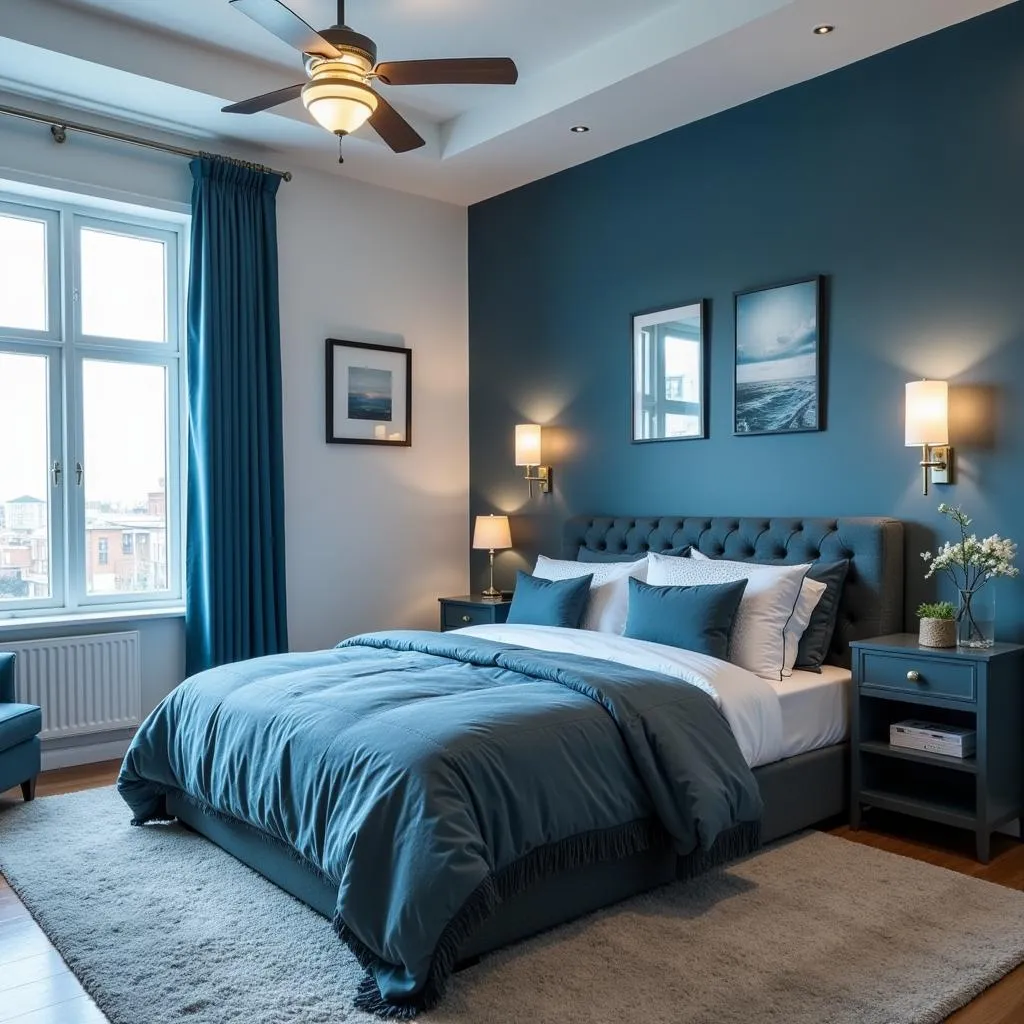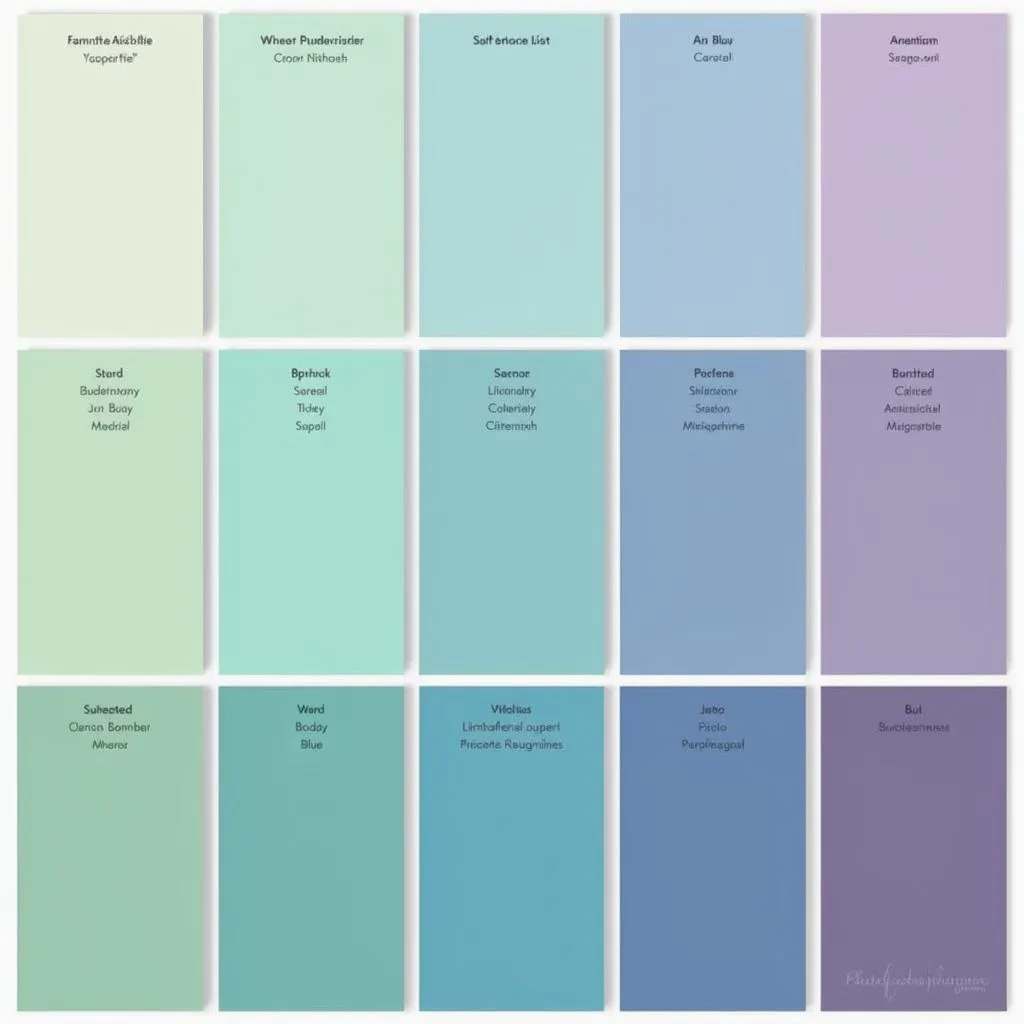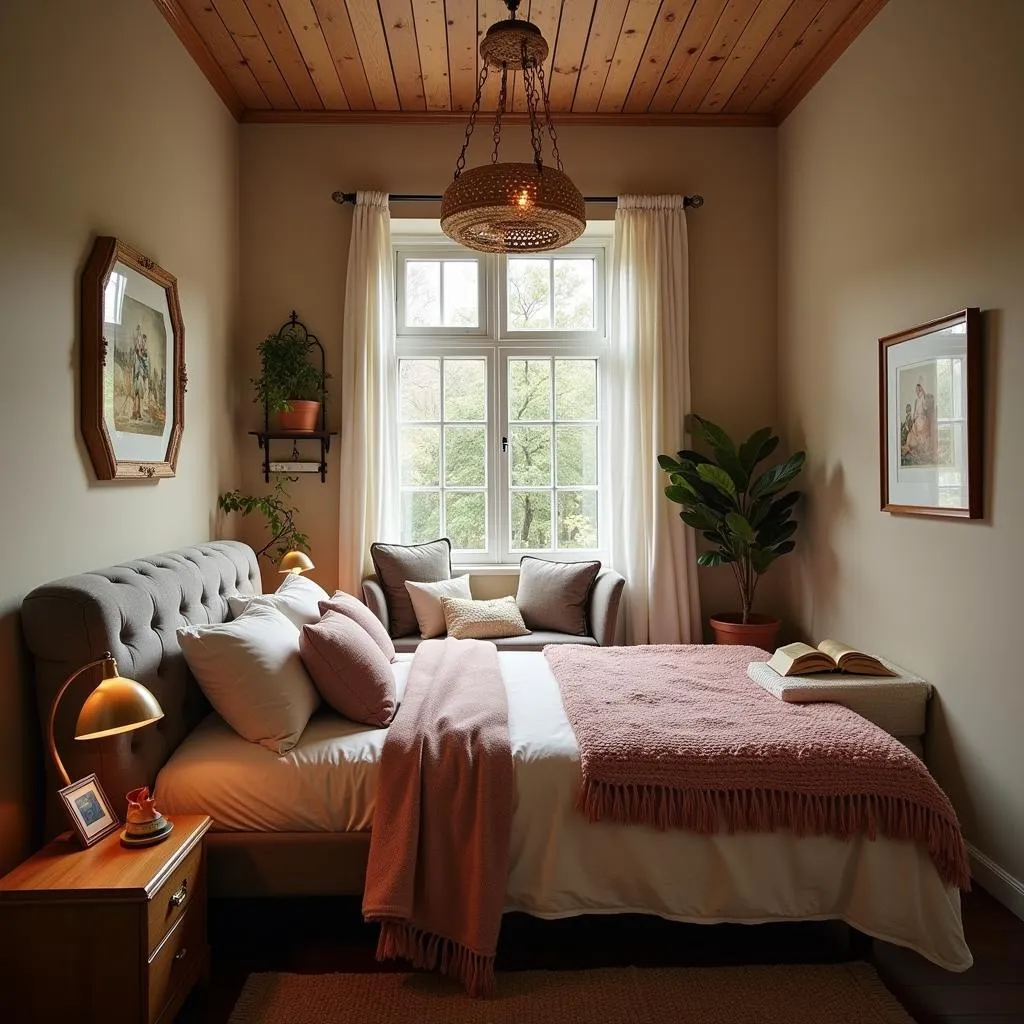Choosing the right color for your bedroom can significantly impact the quality of your sleep. While personal preference plays a role, certain colors are known for their calming and sleep-promoting effects. This guide will explore the best colors for sleep and how to incorporate them into your bedroom decor for a more restful night’s sleep.
 Calming Blue Bedroom
Calming Blue Bedroom
Understanding the Impact of Color on Sleep
Colors have a powerful effect on our mood, emotions, and even our physical well-being. This impact stems from how our brains perceive different wavelengths of light, triggering various physiological responses. When it comes to sleep, certain colors can either promote relaxation and sleep or stimulate the brain, making it harder to fall asleep.
Best Colors for Sleep
1. Blue: The Most Popular Choice
Blue is scientifically proven to be the best color for sleep. It evokes a sense of calmness and tranquility, reducing heart rate and blood pressure – essential factors for good sleep.
Expert Insight: “Blue is associated with feelings of peace and serenity, making it an ideal choice for bedrooms,” says renowned sleep psychologist Dr. Emily Carter. “Its calming effect on the nervous system helps prepare the body for sleep.”
Various shades of blue can create different moods:
- Light Blue: Promotes relaxation and a sense of spaciousness.
- Dark Blue: Evokes feelings of security and coziness.
- Blue-Green: Offers a refreshing and calming ambiance.
 Sleep-Inducing Bedroom Color Palette
Sleep-Inducing Bedroom Color Palette
2. Green: Bringing Nature Indoors
Green is another excellent choice for bedrooms, connecting us to nature and promoting a sense of peace and tranquility. It’s often associated with calmness, rest, and renewal.
Consider these shades:
- Sage Green: Provides a calming and grounding effect.
- Olive Green: Creates a warm and inviting atmosphere.
- Mint Green: Offers a light and refreshing feel.
3. Yellow: Soft and Soothing
While often associated with energy, soft, pale yellows can create a cozy and inviting atmosphere in the bedroom.
Tip: Opt for muted yellows with warmer undertones rather than bright, vibrant hues that can be stimulating.
4. Other Calming Colors
- Lavender: Known for its relaxing and sleep-promoting properties.
- Pink: Soft, muted pinks can create a sense of tranquility and comfort.
- Neutral Colors: Shades like beige, grey, and taupe can be relaxing when paired with the right textures and accents.
Colors to Avoid in the Bedroom
While personal preference varies, some colors are best to avoid in the bedroom:
- Red: Stimulates the nervous system and can make it harder to fall asleep.
- Orange: Similar to red, it can increase energy levels and disrupt sleep.
- Bright Yellow: Can be overly stimulating and make it difficult to relax.
Incorporating Sleep-Promoting Colors in Your Bedroom
- Wall Color: Paint your bedroom walls in a calming color like blue, green, or lavender.
- Bedding and Curtains: Choose bedding and curtains in soft, muted shades of blue, green, or neutral colors.
- Accent Colors: Add pops of color with throw pillows, blankets, and rugs in complementary shades.
Remember, creating a relaxing and sleep-friendly bedroom involves more than just color. Factors like lighting, temperature, and noise levels also play a crucial role in achieving quality sleep.
 Cozy Bedroom Reading Nook
Cozy Bedroom Reading Nook
Conclusion
Choosing the right color palette for your bedroom can significantly impact your sleep quality. By incorporating calming colors like blue, green, and lavender, you can create a tranquil and restful sanctuary that promotes relaxation and better sleep.
Do you have any questions about choosing the best colors for your bedroom? What color jewelry goes with a champagne dress? Or perhaps you’re interested in exploring what hair color looks good for dark skin? Contact us today! Our team at Color Box Hanoi is here to help you create a beautiful and sleep-friendly bedroom that reflects your unique style and promotes restful nights. Call us at 0373298888, email us at [email protected], or visit us at 86 Cầu Giấy, Hà Nội. We are available 24/7 to assist you.

